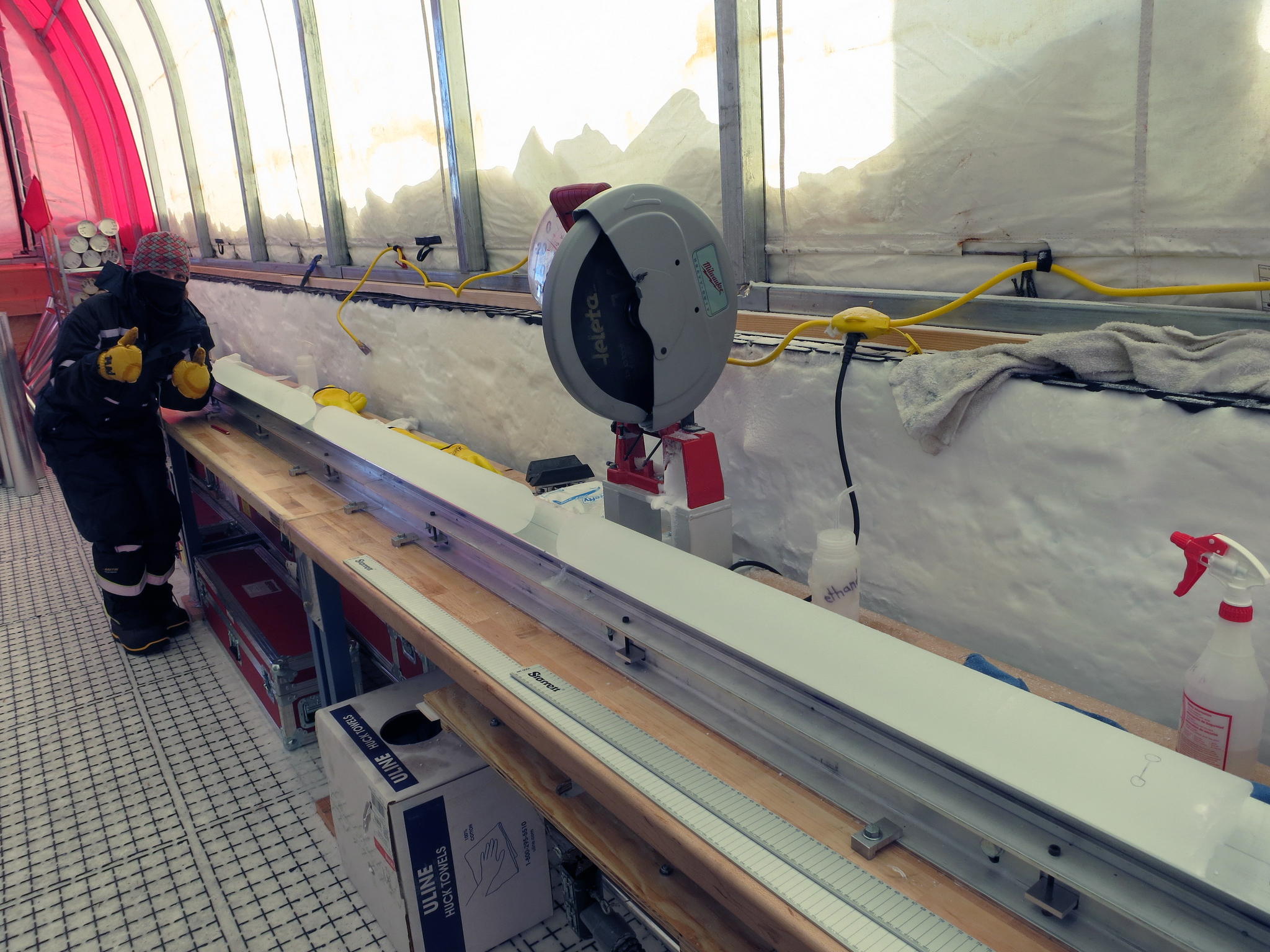
THINKING BACK TO THE DAILY LIFE AT SOUTH POLE sometimes feels like a dream. However, the hundreds of pictures I took and the 500+ meters of ice core sitting in the archive freezer at the National Ice Core Laboratory prove that it really happened. For three months, I lived and worked at the South Pole as part of the science team for the new South Pole Ice (SPICE) Core.

A collaborative effort of the University of California Irvine (Murat Aydin), the University of Washington (Eric Steig), and the University of New Hampshire (Mark Twicker and Joe Souney) – with assistance from NASA GSFC (Tom Neumann) – the SPICE Core will reach a depth of 1,500 meters and provide a history of atmospheric trace gases, stable isotopes, aerosols, and other climate records for the past 40,000 years. The SPICE Core will be the first deep ice core drilled at the South Pole and will span the last interglacial period and allow for further investigation into the abrupt climate changes that have occurred in the past (see Peter Rejcek's Going deep story for more information).
When the ten of us comprising the SPICE Core team arrived at the South Pole in mid-November 2014, the SPICE Core drill camp was just a dot on a map and an area where several cargo boxes had been deposited. Within about three weeks, the drill trench had been excavated, the drill tent constructed and the new intermediate depth drill was in place ready to drill into the ice sheet. Specially designed by the Ice Drilling Design and Operations (IDDO) group at the University of Wisconsin-Madison, the Intermediate Depth Drill can recover a two-meter long, 98-mm diameter, ice core during a single drill run. On December 8th, a little less than a month after arriving at the South Pole, the 10-person SPICE Core team celebrated the first run of the drill and a successful recovery of the first two meters of the SPICE Core. For the remainder of the field season, drilling took place 20 hours a day and 6 days a week. The season goal of 700 meters was surpassed and drilling finished for the 2014-2015 season at a depth of 736 meters.

Daily life at the South Pole was much different than my typical life in Southern California. The warmest day during the field season occurred around late December when ambient temperatures peaked around -25°C. Fortunately, the drill tent had an insulating effect and kept the drill trench near -20°C for most of the season. Some days, weather systems would move in and we'd experience winds up to 20 knots and wind chills in the -50°C range. In addition to the cold, the South Pole packs another punch: 10,000 feet elevation. Although the physical elevation of the Pole is closer to 9,000 feet, the thin atmosphere at the Pole leads to a physiological elevation that is higher. Simple daily activities at the drill site such as packing ice core boxes or climbing stairs were quite an exertion.
The harsh climate at Pole was also hard on the drill. The bitterly cold ice (-50°C) tore up the cutter heads which required replacement by the skilled machinists at the station on what seemed like a weekly basis. The dry air also was not very kind to electronics and circuit boards. Can you say static electricity? In the end, the first season of the SPICE Core drilling was a remarkable feat. To start from scratch and surpass the season goal despite a few setbacks took a great deal of effort from all involved.
Roughly 550 meters of the upper portion of the SPICE Core were shipped back to the National Ice Core Laboratory (NICL) in Denver, Colorado for processing. Annual layer counting and electrical conductivity measurements of peaks in acidity corresponding with volcanic events will aid in developing a reliable chronology. Although drilling of the ice core will likely conclude during the 2015- 2016 season, the analysis and interpretation of the SPICE Core will continue on for many years.
One of the main motivations for drilling the SPICE Core was to acquire an ice core that is suitable for trace gas research – the research we conduct at the Saltzman/Aydin Research Group at UC Irvine. The goal of our research is to use trace gases found in ice core air bubbles as tracers for biogeochemical cycles. The trace gases we extract from ice core bubbles are typically in concentrations of parts per trillion (one part gas per one trillion parts air). Gases such as carbonyl sulfide (OCS) and ethane (C2H6) have relatively simple pre-industrial atmospheric budgets. Therefore, an ice core record of these gases can inform us about the variability in the sources or sinks of these gases in the past. Ultimately, these gases aid in developing proxy records for various natural processes, such as primary productivity or biomass burning. The SPICE Core is a very cold site with mean annual temperatures of -50°C. This temperature is very similar to the temperature of the ice down to 1,500 meters. The cold temperature of the SPICE Core makes it an exceptional site for the preservation of trace gases in the ice core air bubbles.
